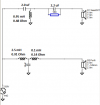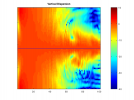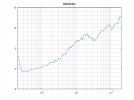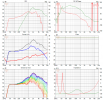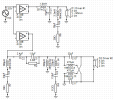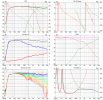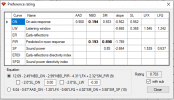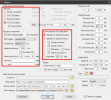In principle, everything is correct so far. Since this is the first time Amir has measured individual drivers for a loudspeaker design, there are a few uncertainties in the data.
It seems that Amir set the NFS so that the reference point for tweeter and woofer was the center of the driver for both measurements.
Therefore, in VCAD, the driver spacing of tweeter and woofer must be entered for the y-axis. We have chosen the center of the tweeter as the listening reference axis. Therefore, the y-value for the tweeter remains 0 in VCAD, and -145mm is entered for the woofer.
View attachment 159239
With the measurement method described above, it is crucial that the distance to the baffle (z-direction) does not change when the microphone is set once at the height of the tweeter and once at the height of the woofer. Therefore, the relative z-axis offset of the sound origins of tweeter and woofer is already included in the measurement (but the y-axis offset not).
Amir is not sure whether he has entered the selected reference points in the Klippel NFS in the z-direction with millimeter precision.
This is still a small uncertainty until someone has either built the first passive crossover or has checked via measurements that the 52µs delay set for the active version corresponds to reality.

